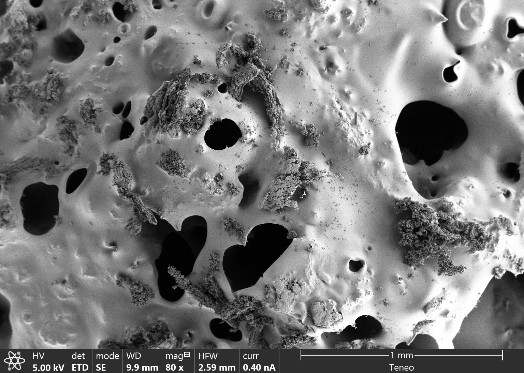Development of Porous Polyvinyl Acetate/Polypyrrole/Gallic Acid Scaffolds Using Supercritical CO2 as Tissue Regenerative Agents
Diego Valor , Antonio Montes , Antonio Cózar, Clara Pereyra and Enrique Martínez de la Ossa
Scaffolds are advanced devices employed in tissue engineering, as they are intended to mimic the characteristics of extracellular matrices. In this respect, conjugated materials are gaining relevance in the manufacturing of the foams used for therapeutic scaffolds, since they can provide certain properties that are missing in the other polymers used to form the scaffolds. This work has, therefore, focused on the development of functional scaffolds formed by conjugated-non-conjugated polymers such as polyvinyl acetate and polypyrrole, impregnated with gallic acid as the model drug and produced by means of a supercritical CO2 foaming/impregnation process. The effects from a series of parameters such as pressure, temperature, depressurization rate, and contact time of the scaffold production process have been determined. The impregnated foams have been characterized according to their morphology, including their porosity and expansion factor, their drug loading and delivering capabilities, and their mechanical and electrical properties. The characterization of the experiments was carried out using scanning electron microscopy, liquid displacement, in vitro release, electrochemical impedance spectroscopy, and compression techniques. The results from our tests have revealed a considerable influence of all the input variables studied, as well as relevant interactions between them. Values close to 35% porosity were obtained, with a drug release of up to 10 h with a fast initial release. The best operating conditions were 353 K, 30 MPa, 0.5 MPa/min depressurization rate, and 1 h contact time. By means of the supercritical foaming/impregnation technique, scaffolds with potential in tissue engineering due to their studied properties were obtained
Open Acess


